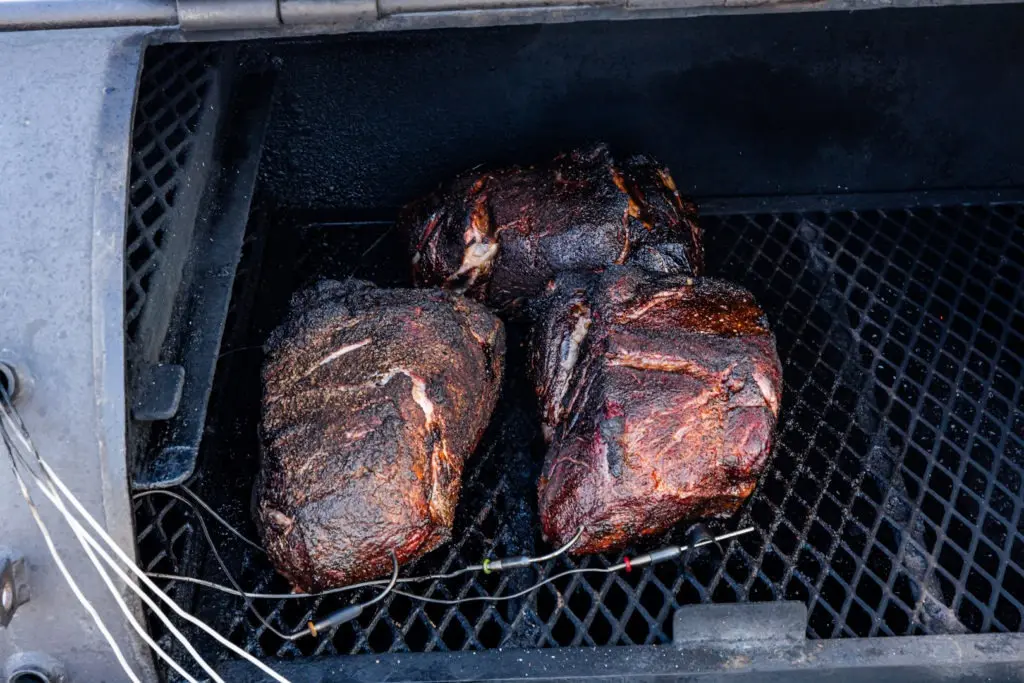Smoking pork shoulder is a popular cooking method that results in tender and flavorful meat. However, there is often a debate among barbecue enthusiasts about when to wrap the pork shoulder during the smoking process. In this article, we will explore the different opinions and provide guidance on when to wrap your smoked pork shoulder.

How Long Do I Leave Pork Unwrapped When Smoking?
The duration for leaving pork unwrapped when smoking can vary depending on personal preferences and desired results. Some pitmasters advocate for leaving the pork shoulder unwrapped for the entire smoking process, while others prefer to wrap it at a specific point to help retain moisture and enhance the tenderness of the meat.
When smoking pork shoulder, it is common to follow a 3-2-1 method, which refers to the hours of cooking time for each stage. During the initial 3 hours, the pork shoulder is left unwrapped to allow the smoke to penetrate the meat and develop a smoky flavor. This stage is crucial for the absorption of smoke and the formation of the desirable bark on the exterior of the meat.
After the initial 3 hours, some pitmasters choose to wrap the pork shoulder in foil or butcher paper. Wrapping helps to prevent the meat from drying out and can accelerate the cooking process. The wrapped stage typically lasts for 2 hours, during which the meat steams in its own juices, resulting in a more tender and moist final product.
However, it is important to note that not all pitmasters wrap their pork shoulder. Leaving it unwrapped for the entire smoking process can result in a firmer bark and a slightly different texture. The decision to wrap or not to wrap ultimately depends on personal preferences and the desired outcome.
Benefits of Wrapping
There are several benefits to wrapping the pork shoulder during the smoking process:
- Moisture Retention: Wrapping helps to trap moisture within the meat, preventing it from drying out.
- Tenderization: The steam created inside the wrap helps to break down connective tissues, resulting in a more tender final product.
- Faster Cooking: Wrapping can accelerate the cooking process by creating a more controlled environment, allowing the meat to reach the desired doneness sooner.
Should I wrap my pork shoulder in foil or butcher paper?
Both foil and butcher paper can be used to wrap the pork shoulder during smoking. Foil provides a tighter seal and can retain more moisture, while butcher paper allows for some airflow and can help maintain a crispy bark. The choice between foil and butcher paper depends on personal preference and desired results.

Can I unwrap the pork shoulder after wrapping?
Yes, you can unwrap the pork shoulder after the wrapped stage if you prefer a firmer bark. However, keep in mind that the meat may be more prone to drying out if left unwrapped for an extended period.
What temperature should I wrap the pork shoulder?
The decision to wrap the pork shoulder is based on time rather than temperature. The general guideline is to wrap after the initial 3 hours of smoking. However, if you notice that the bark has developed to your liking before the 3-hour mark, you can go ahead and wrap it earlier.
When it comes to smoking pork shoulder, the decision of when to wrap is a matter of personal preference. Wrapping can help retain moisture, enhance tenderness, and speed up the cooking process. However, leaving the pork shoulder unwrapped for the entire smoking process can result in a firmer bark and a slightly different texture. Experiment with different methods to find the one that suits your taste and enjoy the delicious results of your smoked pork shoulder.
If you want to know other articles similar to Smoked pork shoulder: when to wrap for perfect results you can visit the Smoking category.


Related Articles